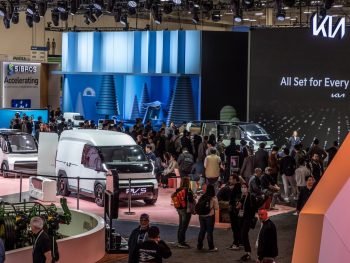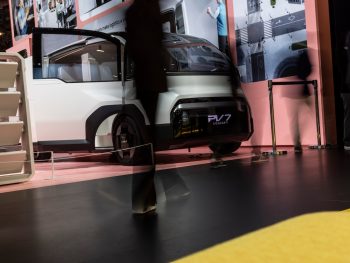Kia’s newly unveiled modular electric vehicles look set to shake up the light commercial vehicle sector, providing an alternative to established electric vans.

The South Korean car giant revealed plans to launch PBVs in its 2020 Plan S strategy and previewed the first vehicles at CES, while discussing its plans with Van Fleet World.
Originally defined as ‘Purpose-Built Vehicles’ – and now tagged as ‘Platform Beyond Vehicle’, the vans will initially be produced in South Korea for the South Korean market,
The first model will be the PV5, revealed in concept form at CES. It’s designed to be competitive with light van models such as the Citroën Berlingo, Peugeot Partner, Fiat Doblo, Vauxhall Combo, Ford Transit Connect and VW Caddy. It will be 4.7m long and the prototype design is close to how production versions will look.
Kia confirmed to Van Fleet World at the show that the PV5 will come to the UK around 2026, forming Phase One of the LCV range launch.
The brand will also launch a larger model, the PV7, which will compete in the medium van segment against models such as the Ford Transit Custom, Mercedes-Benz Vito, VW Transporter, Citroën Dispatch, Peugeot Expert, Fiat Scudo and Vauxhall Vivaro.
PV7 will join the PV5 in the UK as part of Phase Two of the project. This is expected to get under way between 2027 and 2032 but no launch date has been set for the UK yet.
Kia’s proposed also includes smaller PV1 and PV3 models. PV3 will be similar in size to the previous model Ford Transit Courier and the smallest PV1 will be aimed at the ‘last-mile’ delivery sector. No date has been set for PV3 production to begin.
None of the range will be powered by an internal combustion engine; instead, all will be based on an electric ‘skateboard’ modular platform design.

PV5 will feature front-wheel drive and 400-volt architecture, while PV7 is expected to be available in both front-wheel and all-wheel drive and will feature 800-volt electrical architecture. It will also have the greatest range.
While PV3, PV5 and PV7 will all require a driver at the wheel, PV1 is planned purely as an autonomous vehicle.
Kia envisages a range of models including van, high-roof van, pickup and robot taxi (due around 2028) for the PV5 and PV7. Van variants will be the first PV5 models to come to market.
The designs shown at CES included interchangeable modular bodies for cargo and passenger use as well as mobile offices.
Modules were also proposed for racking, attached using a body mounted rail system to avoid the need for post-production conversions. The cab could feature a full-width dashboard screen, while the steering wheel and column in the prototypes on display tilted to a vertical position to aid ingress and egress. In this position, the steering wheel could also be used as a table lamp.
A dedicated production plant is under construction in South Korea and will have an initial production capacity of 150,000 per year. European production could be included when demand grows.
Further details of Kia’s van plans will be revealed in the next issue of Van Fleet World. To subscribe to the magazine, please click here.

